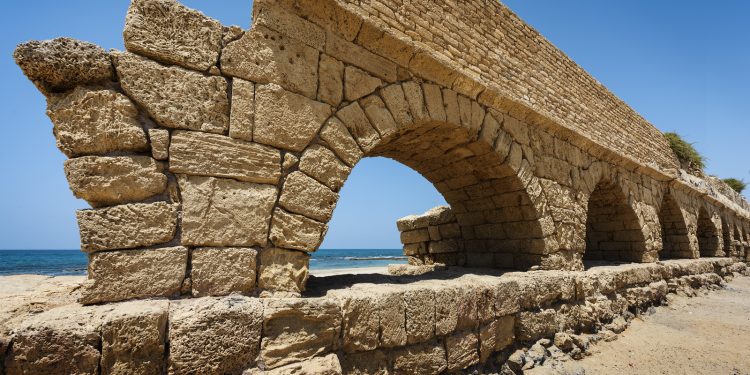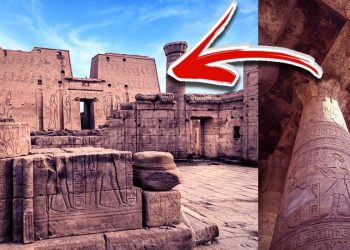Ancient civilizations were far more advanced than we often give them credit for, and their innovations in water management are no exception. One such remarkable feat is the qanat system, an underground aqueduct used to transport water in arid regions. These structures, some dating back 3,000 years, have withstood the test of time, and now, modern technology is shedding new light on these ancient wonders.
But here’s the fascinating part: the tools revealing these ancient aqueducts are not cutting-edge satellites or the latest scientific advancements. Instead, as explained by Popular Mechanics, archaeologists are repurposing imagery from Cold War-era satellites—technology that was originally designed for reconnaissance, not archaeology. The imagery provided by the U.S. HEXAGON satellite series, which operated from 1971 to 1986, has become a key resource for locating these subterranean water systems. This intersection of old technology and modern-day research offers a fresh perspective on how we can explore the distant past with tools that were never intended for such a purpose.
The Ingenious Qanat System
The qanat system was an ancient engineering marvel, designed to bring water from higher ground to regions that lacked surface water sources. These aqueducts, primarily found across the Middle East, are constructed with a series of vertical shafts that make the underground tunnels visible from above. The tunnels themselves could extend for miles, channeling precious water from mountainous areas to settlements in the plains. This allowed ancient communities to flourish in otherwise inhospitable environments.
What makes qanats so enduring is their sustainable design. By tapping into underground water, they reduced evaporation and ensured a continuous supply throughout the year. Some of these systems are still operational today, highlighting their incredible resilience.
The Role of HEXAGON Satellites
The HEXAGON satellites, also known as Big Bird, were originally developed for military purposes, capturing high-resolution black-and-white photographs of the Earth’s surface. These satellites featured dual optical bar cameras that could photograph objects smaller than two feet across from an altitude of 100 miles. Over the span of 18 missions, they imaged 877 million square miles of terrain.
While the original purpose of these satellites was military intelligence, their high-resolution images are proving invaluable to modern archaeologists, reveals Popular Mechanics. Researchers in Spain have harnessed this Cold War technology to detect the qanat systems by analyzing the distinctive patterns of ventilation shafts from the satellite images.
Merging Old Tech with New AI Models
To make their findings even more accurate, the Spanish research team developed a machine-learning model to analyze the HEXAGON imagery. By feeding this model a combination of real satellite images and AI-generated data, they were able to refine their search for qanats, achieving an 88% success rate in identifying these ancient structures. This innovative approach not only improves the precision of their discoveries but also eliminates many false positives that can slow down research efforts.
What sets this study apart is its ability to generalize the findings across diverse landscapes. The team successfully applied their model to areas in Afghanistan, Iran, and Morocco—regions where qanat systems are well documented—proving that their method can be adapted to different environments. This breakthrough paves the way for future archaeological discoveries, not just of qanats but of other hidden ancient structures across the globe.
A Window into the Past
The implications of this research are profound. For centuries, qanats have been central to life in arid regions, helping to sustain agriculture, trade, and settlement. Some qanat systems are even recognized as UNESCO World Heritage sites. This newfound ability to map these ancient water systems from space allows us to better understand the technological prowess of past civilizations, their societal structures, and their adaptations to challenging environments.
“The innovation of qanats was pivotal in allowing civilizations to thrive in areas that would otherwise have been uninhabitable,” says Hector Orengo of the Catalan Institute of Classical Archaeology. “It’s fascinating to see how these systems, built so long ago, are still shaping our understanding of the ancient world today.”
Future Prospects: Unlocking More Hidden Secrets
The success of this satellite-based approach has far-reaching implications for the field of archaeology. As researchers continue to refine their models and explore new regions, the possibility of uncovering other lost ancient technologies or cities increases. The fusion of historical satellite data with modern AI offers a new frontier in archaeological research, one that could reveal forgotten civilizations and expand our knowledge of human history.
This study also invites us to think about the broader potential of repurposing older technologies. Could there be other Cold War tools waiting to be repurposed for scientific discovery? The use of HEXAGON imagery underscores the importance of creative thinking in solving today’s scientific puzzles, reminding us that technological breakthroughs often come from unexpected places.
As we continue to explore the mysteries of our past, one thing is clear: the combination of human ingenuity, ancient innovation, and modern technology is an incredibly powerful tool for unlocking the secrets of history. What other discoveries might be waiting beneath the surface, hidden from view until the right eyes—or satellites—spot them?
With the success of this research, the possibilities seem endless. How might similar technology be used to uncover other hidden relics of the past? Will we soon be able to map out entire ancient cities or uncover trade routes long forgotten by history? As our understanding of the past continues to evolve, so too does our ability to explore it.











